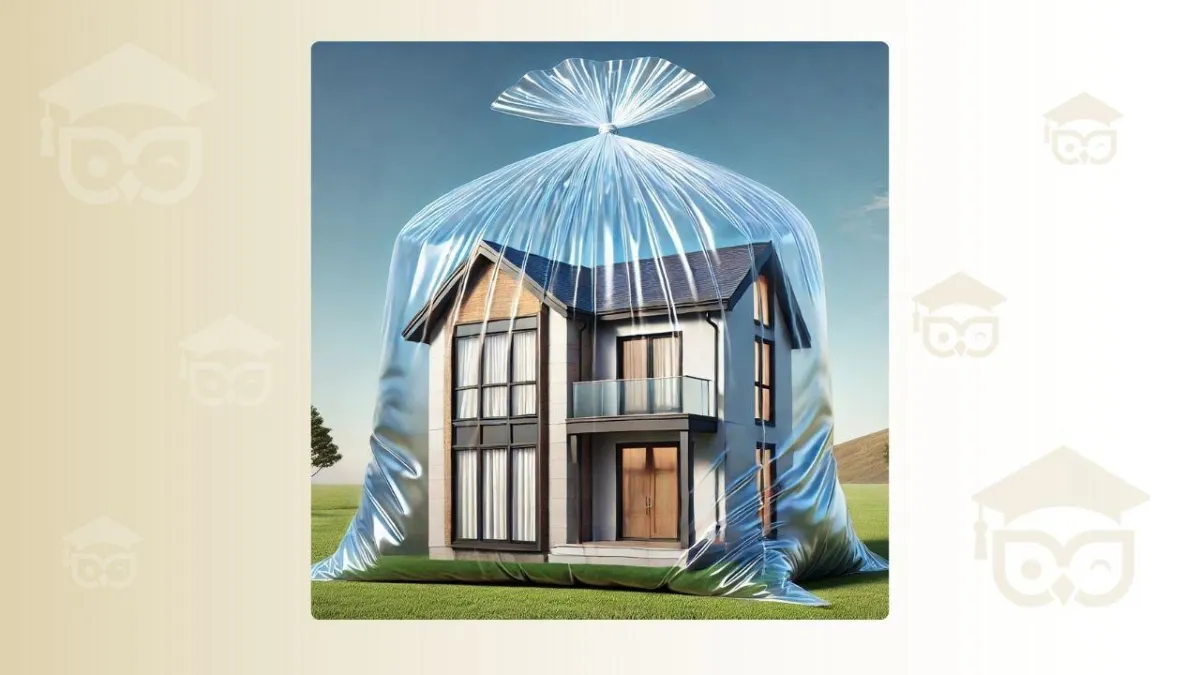
Can We Build Too Airtight?
Can We Build Too Airtight?
In the realm of modern building design, airtightness is a crucial concept. But it often raises the question: Can we build too airtight? Understanding the balance between airtightness and ventilation is key to creating healthy, energy-efficient homes.
Choose How You Want to Learn:
Flexibility for different learning styles — all blocks optional, use one or all, you choose.
🎧 Listen on the Go:
Audio version for your commute
☕ Coffee Chat with Your Passivhaus HUB Mentors:
Join senior trainers Julia and Daniel as they share insider tips you won't find in textbooks. Real talk about what actually works on-site.
🎙️ Hear It From Aime & Aiden
Our AI podcast hosts break this down into bite-sized insights. Perfect for your morning walk.
Understanding Airtightness
Airtightness refers to the ability of a building to prevent uncontrolled airflow through its envelope, including walls, roofs, and floors. Achieving high levels of airtightness is essential. It not only protects the building structure from moisture-related issues but also enhances energy efficiency by reducing the loss of heated or cooled air.
Risks of Poor Airtightness
If air is allowed to move uncontrolled through the building envelope, it can lead to condensation issues within the structure, potentially causing health risks for occupants and durability issues for the building itself. These issues are often hidden within the structure. If a room smells mouldy and you can’t find the source, it’s probably an air leak.
Condensation occurring on surfaces like walls, roofs, floors, windows, or corners is usually not an airtightness issue. These are thermal insulation issues often related to thermal bridges. Thermal bridges are weak points in the insulation where heat escapes more easily, leading to cold spots, mould growth, and health problems for occupants. Remember: a cold spot is a mould spot!
The reason why surface condensation is often confused as an air leakage issue is that if a building is airtight and not ventilated properly, moisture levels can rise to unpleasant amounts. When relative humidity levels increase from 10% to 50%, which is desired, insufficiently insulated surfaces, joints, and corners may show mould or condensation. In this case, we have the right level of airtightness and ventilation but an insufficient amount of thermal insulation.
The Importance of Ventilation
While airtightness is vital, it must be paired with a well-designed ventilation system. Mechanical ventilation with heat recovery, known as HRV (Heat Recovery Ventilation) or ERV (Energy Recovery Ventilation), ensures a continuous supply of fresh air while retaining heat, providing a comfortable and healthy indoor environment.
However, not every home owner may have the budget for an HRV or ERV system. In such cases, it is possible to use manual ventilation strategies, including strategically placed vents and windows to facilitate airflow.
Keep in mind that manual ventilation solutions are not optimal for health, comfort, and efficiency. While careful natural ventilation may not pose an immediate health threat, it cannot guarantee a consistently healthy environment. Therefore, it should only be a temporary solution, and an upgrade to a mechanical system should already be allowed for in the design.
Achieving the Right Balance
Regardless of whether you’re using mechanical or manual ventilation, it’s best to build as airtight as possible—ideally achieving an airtightness result below 0.5 air exchanges per hour (ACH) during the blower door test at 50 pascal.
To help you understand the implications of various leakage rates, here’s a table for guidance:
Below 0.5 ACH: Requires designed ventilation strategy to ensure adequate airflow. The risk to the structure is insignificant.
Below 1.5 ACH: Requires designed ventilation strategy to ensure adequate airflow. The risk to the structure is limited.
Below 3 ACH: A designed ventilation strategy can help to ensure accurate airflow. The risk to the structure is strongly reduced, but there are still chances of local high risks of structural damage and mould.
Above 3 ACH: Designed ventilation strategies start to be ineffective due to the high leakage rate but are still recommended. Significant risk to the structure due to uncontrolled air movement and potential condensation.
10 ACH or higher: Designed ventilation strategies are useful but limited in their effectiveness. Comparable to living in a tent, where conditioning is difficult, the structure is less at risk.
The sweet spot for buildings that are operated without an HRV or ERV is between 1.5 and 3 ACH when the designed ventilation openings are open. In other words, when you perform the blower door test and seal the ventilation openings, you should achieve an airtightness result below 1.5 ACH, ideally below 0.5 ACH. Then, when you open the designed ventilation openings, the ventilation rate should be between 1.5 and 3 ACH.
As a side note, even if the blower door test results show a leakage rate higher than 10 ACH, it still doesn’t tell us whether you have sufficient ventilation in each individual room. Some rooms might be very well sealed, even if the rest of the building is leaking.
Practical Tips and Best Practices
Professional Guidance: Engaging with certified professionals ensures that your building design meets the required standards for airtightness and ventilation. Look out for Certified Passivhaus Designers and Tradespeople.
Airtightness Tests: Testing during construction helps identify and rectify potential leaks. Ensure the airtightness tester is certified and independent of the building company.
Ventilation Design: Whether opting for mechanical systems like HRV/ERV or natural ventilation, designing the ventilation strategy is crucial.
Education and Resources: Investing time in learning about airtightness principles can greatly benefit homeowners, designers, and builders. Reliable sources, such as the Smart Plus Academy YouTube channel, offer valuable insights and best practices.
Conclusion
Building airtight is not a concern. The key is to pair airtightness with a well-thought-out ventilation system and a well-designed thermal envelope, ensuring a healthy, energy-efficient home. Promoting comfort and sustainability should always be the goal.
Achieving Passivhaus Standards
If you want to get the fundamentals right to achieve a healthy, energy-efficient home that is cost-effective, you should aim to build to the Passivhaus standard. Passivhaus considers all aspects of airtightness,ventilation, and thermal envelope, ensuring optimal performance and comfort. Additionally, the Passivhaus standard is a legally binding performance standard that ensures your investment, comfort, and health are guaranteed.
Your home is likely the most significant investment of your lifetime, and getting it right can provide long-term benefits for both your health and your wallet.
Explore more about airtightness and ventilation on our YouTube channel, Passivhaus Hub, and take the first step towards a healthier, more sustainable living environment.
